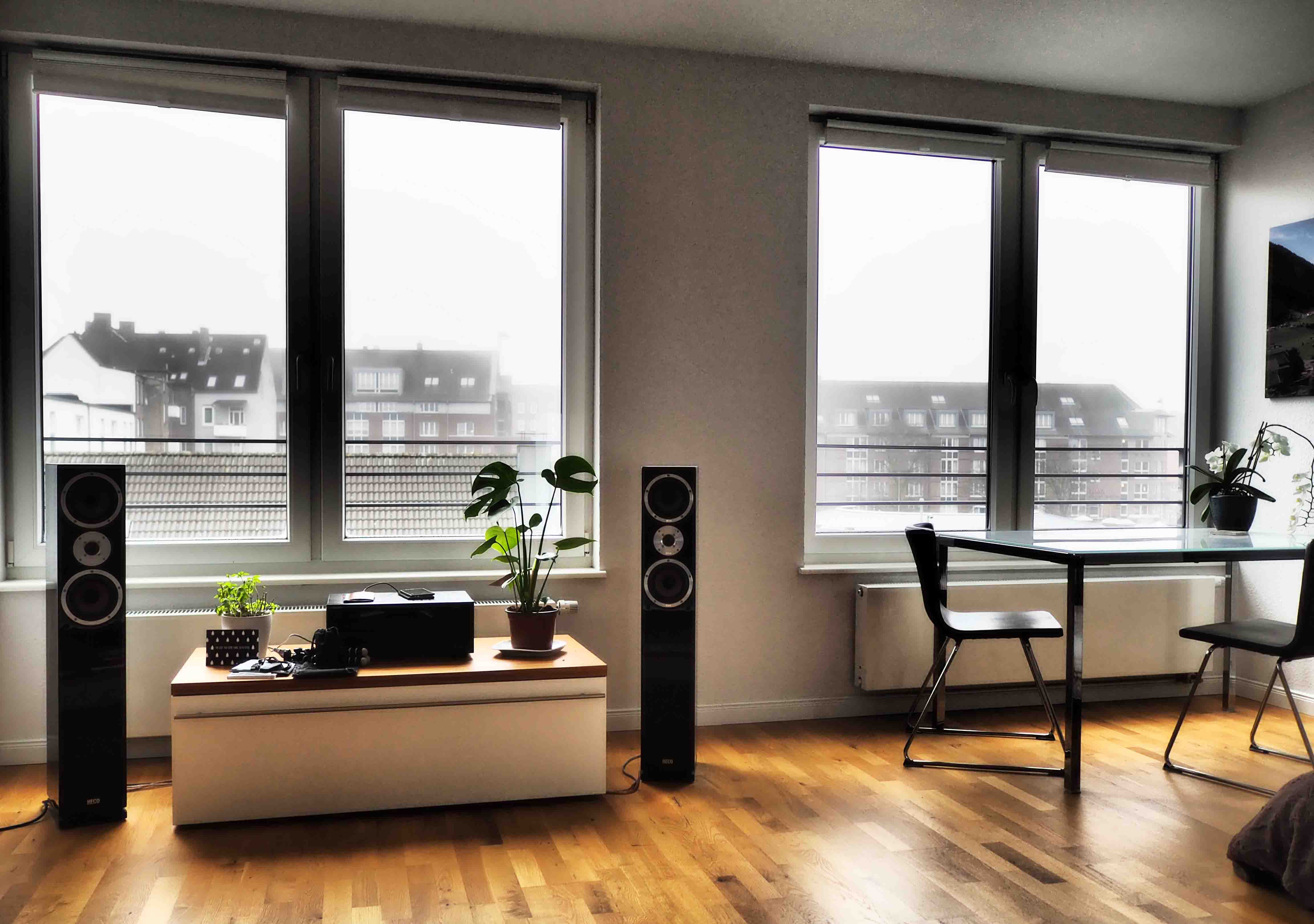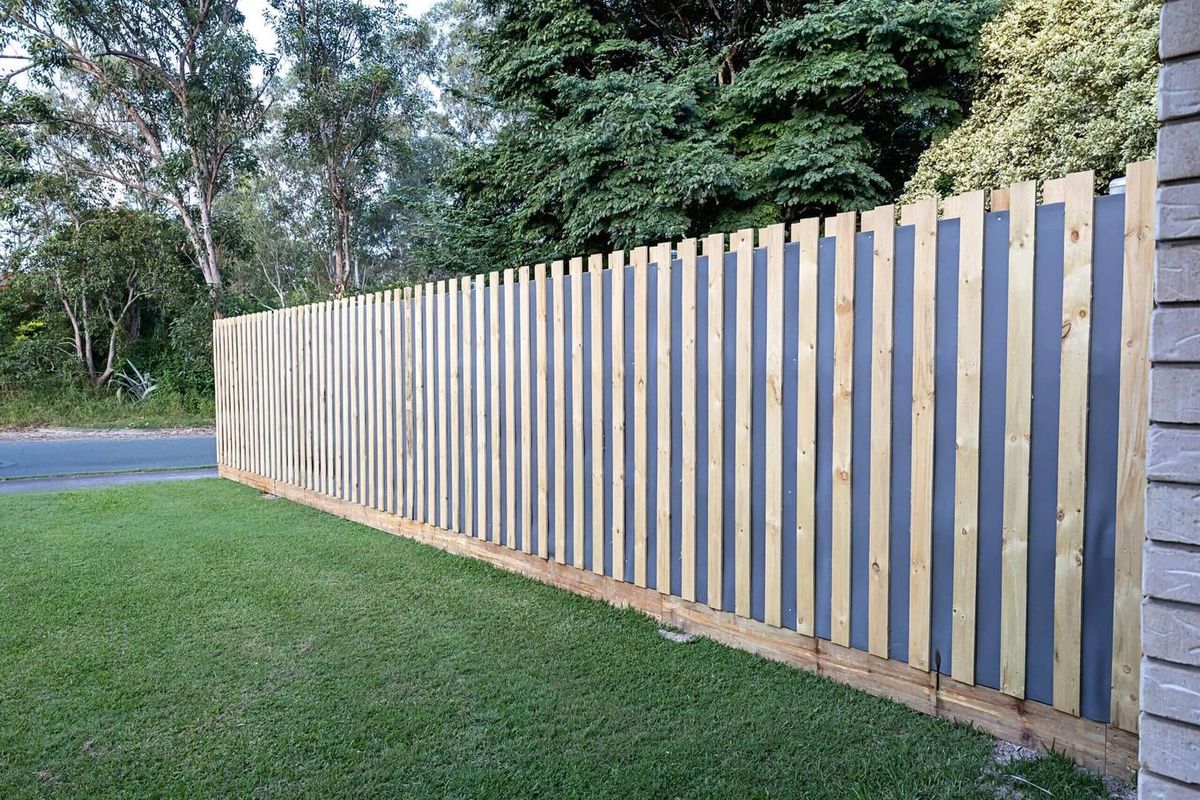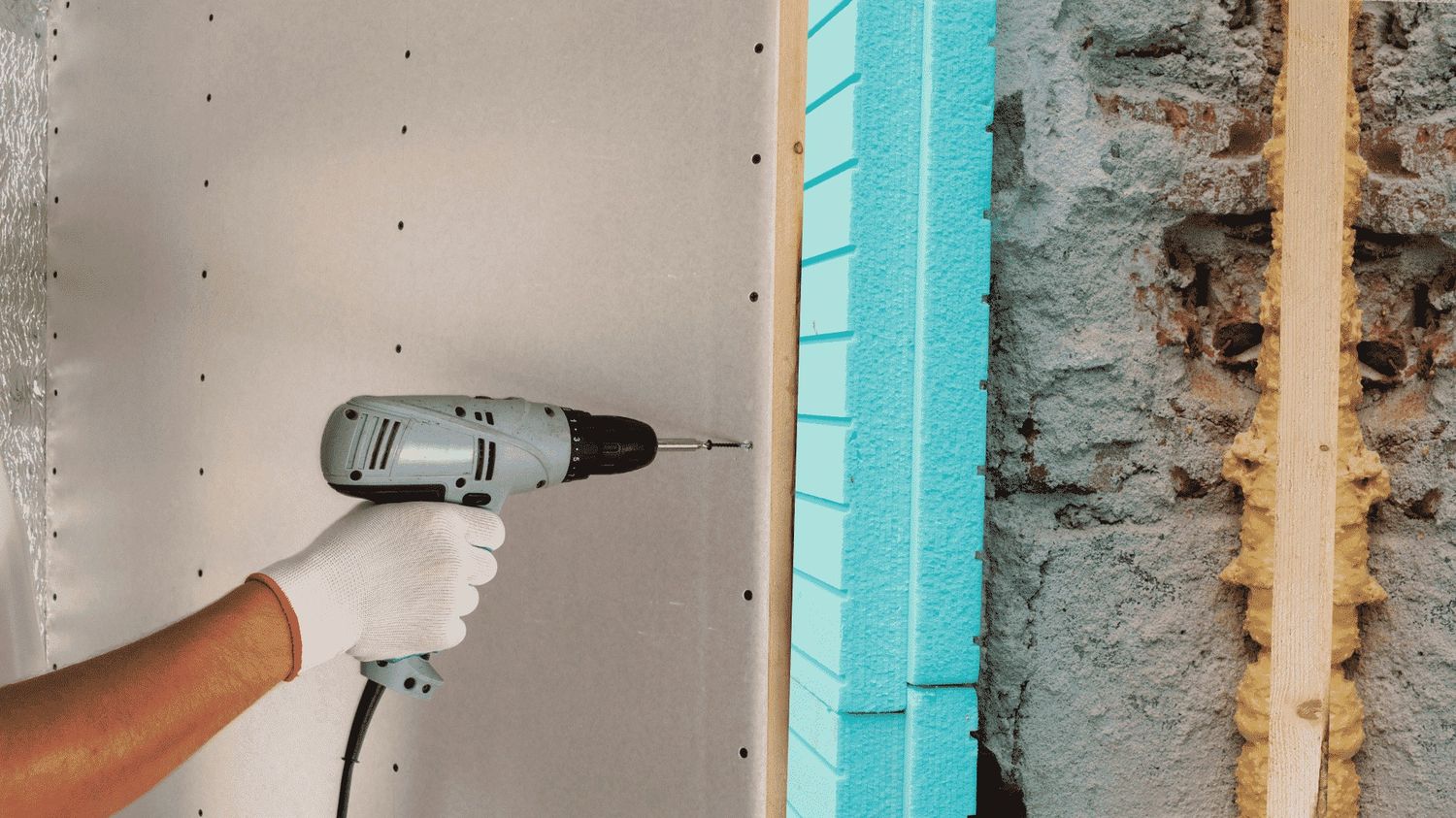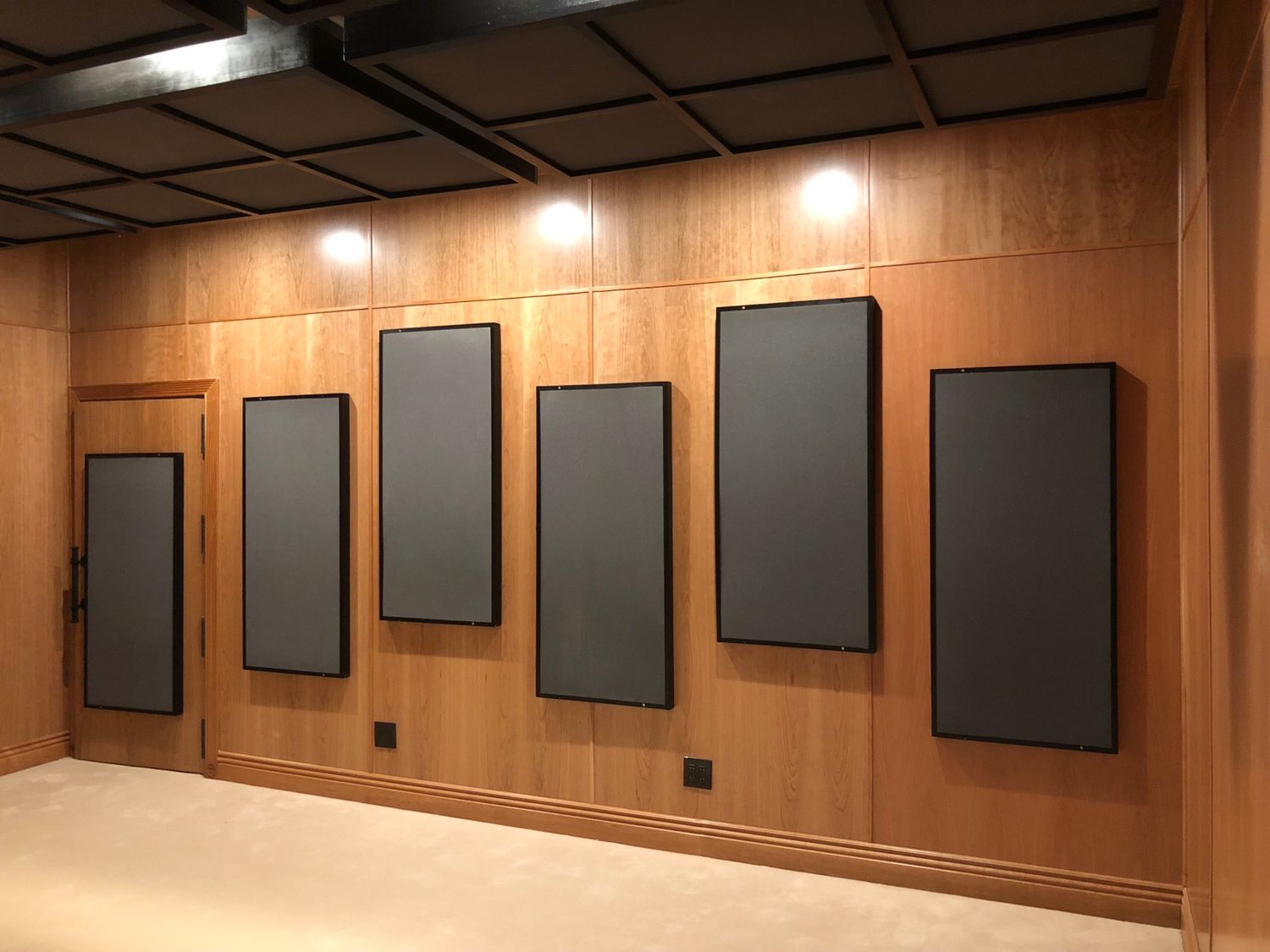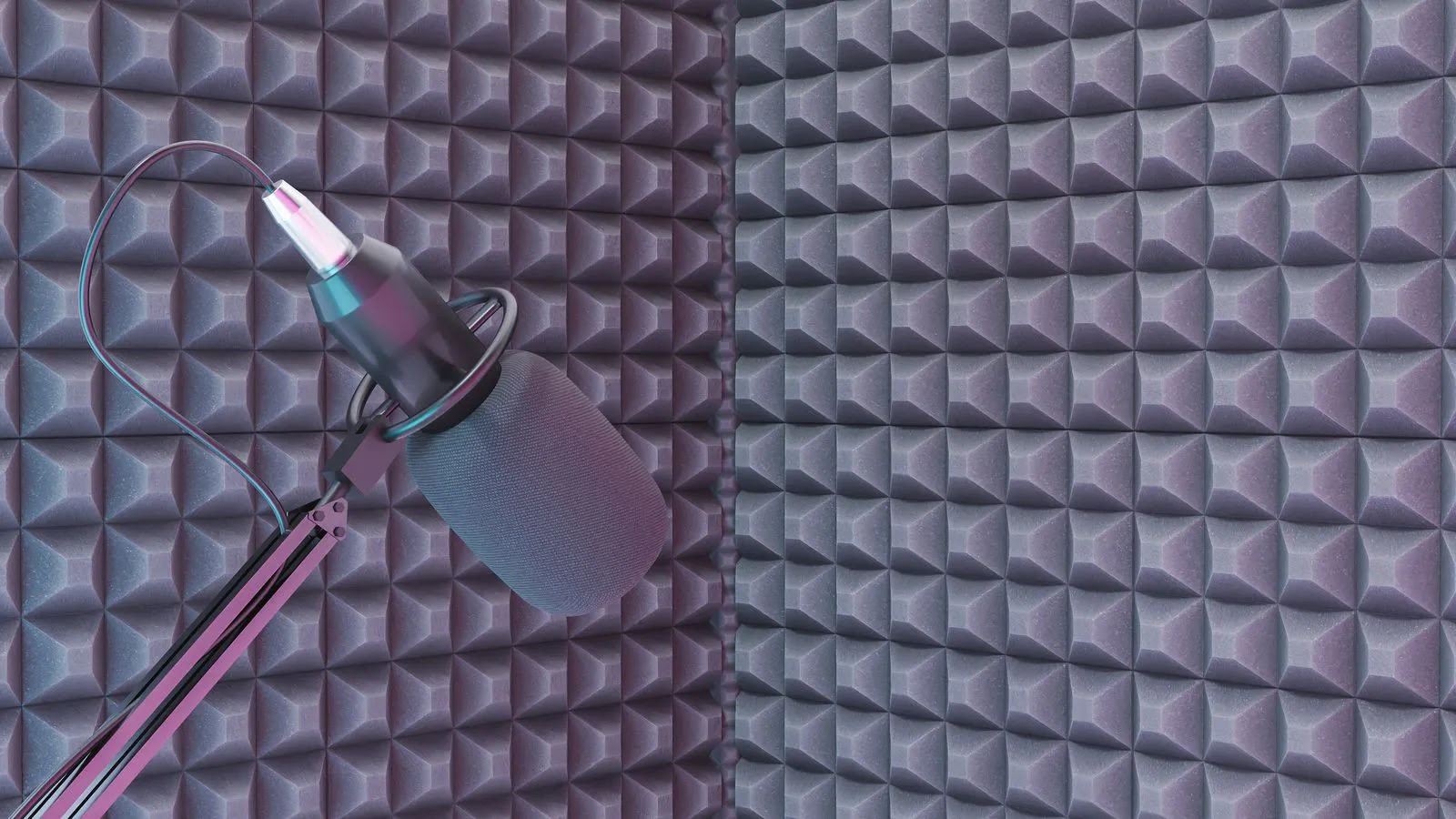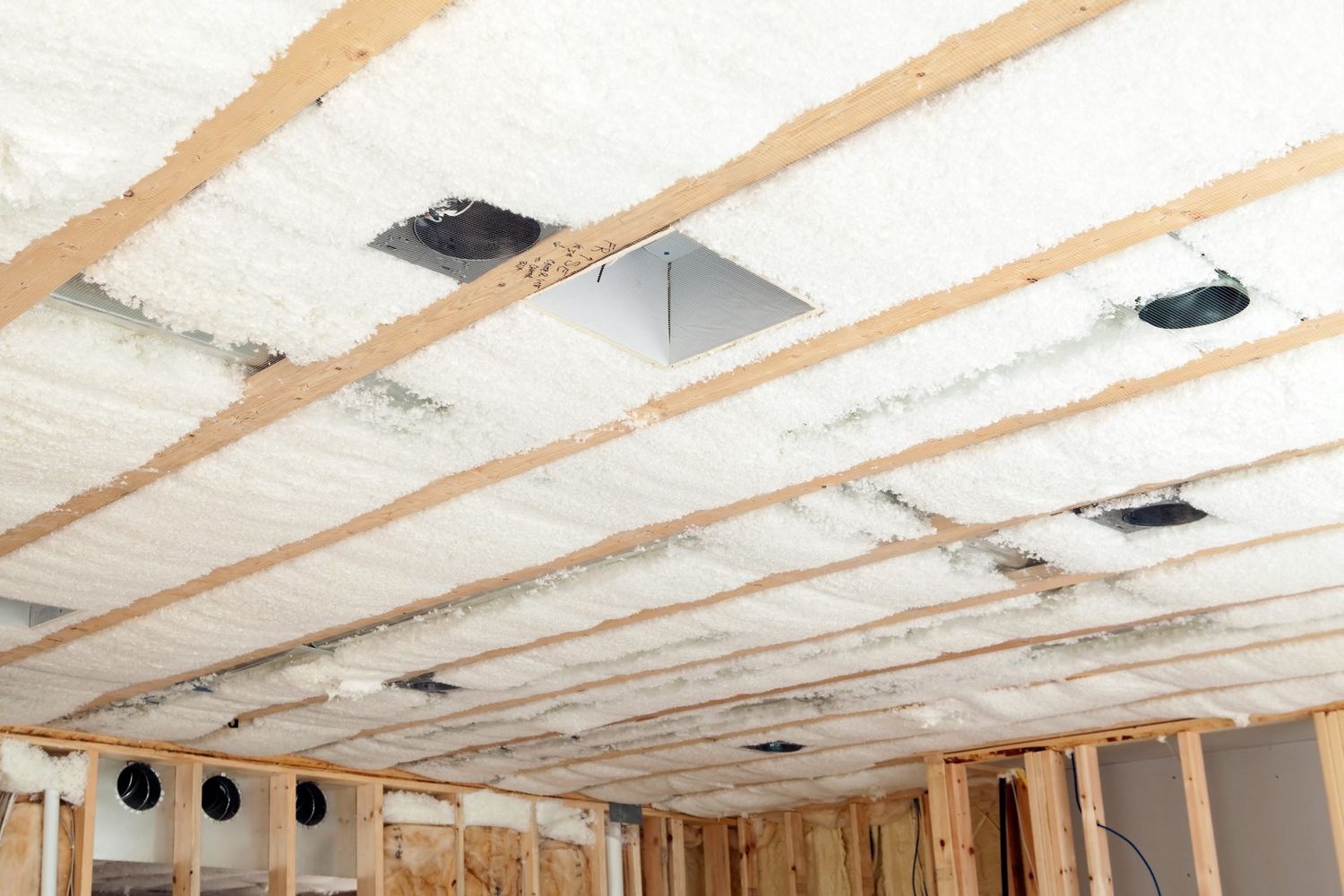Home>Production & Technology>Soundproofing>What Is The Best Soundproofing Material For Walls


Soundproofing
What Is The Best Soundproofing Material For Walls
Published: January 26, 2024
Looking for the best soundproofing material for walls? Discover effective solutions to minimize noise with our expert guide. Improve your living space now!
(Many of the links in this article redirect to a specific reviewed product. Your purchase of these products through affiliate links helps to generate commission for AudioLover.com, at no extra cost. Learn more)
Table of Contents
- Introduction
- Importance of Soundproofing Walls
- Factors to Consider When Choosing Soundproofing Materials for Walls
- Common Types of Soundproofing Materials for Walls
- Fiberglass Insulation
- Acoustic Foam Panels
- Mass Loaded Vinyl (MLV)
- Soundproof Drywall
- Green Glue
- Resilient Channel
- Soundproof Curtains
- Cork Wall Tiles
- Mineral Wool Insulation
- Comparison of Soundproofing Materials Based on Effectiveness and Cost
- Tips for Effective Installation and Maintenance of Soundproofing Materials
- Conclusion
Introduction
Soundproofing walls is essential for creating a peaceful and comfortable environment. Whether you live in a noisy urban area or want to keep the sounds of your home theater system contained, soundproofing can significantly reduce unwanted noise and enhance the overall quality of your living space. In this article, we will explore the best soundproofing materials for walls and provide insights into their effectiveness and cost.
Excessive noise can have a detrimental impact on our well-being. It can disturb our sleep, affect concentration, and increase stress levels. Soundproofing materials act as a barrier to absorb or block sound waves, reducing the transmission of noise between rooms or from external sources such as traffic or loud neighbors. By effectively soundproofing your walls, you can create a more peaceful and serene environment, allowing you to relax, work, or enjoy entertainment without being constantly disrupted by noise.
When choosing soundproofing materials for your walls, there are several important factors to consider. First, you need to identify the specific noise problem you are trying to address. Is it airborne noise, such as voices or music, or impact noise, like footsteps or vibrations? Understanding the type of noise will help determine the most appropriate soundproofing solution.
Another factor to consider is the cost-effectiveness of the soundproofing material. You want to invest in materials that provide the best sound reduction without breaking the bank. Additionally, consider the ease of installation and whether it requires professional assistance or if it is a DIY-friendly option.
In the following sections, we will explore some common types of soundproofing materials for walls, their pros and cons, and tips for effective installation and maintenance. By the end of this article, you will have a clear understanding of which soundproofing materials are best suited to meet your needs and budget.
Importance of Soundproofing Walls
Soundproofing walls is crucial for maintaining a peaceful and harmonious living environment. Whether you reside in a bustling city or have noisy neighbors, unwanted noise can be a major source of frustration and stress. Here are some key reasons why soundproofing walls is important:
- Improved privacy: Soundproofing walls can help create a private space where conversations and activities are not overheard. This is particularly beneficial for bedrooms, home offices, and shared living spaces.
- Better sleep quality: Excessive noise can disrupt sleep patterns and lead to poor sleep quality. By soundproofing your walls, you can minimize external noise intrusion, allowing for a restful and uninterrupted night’s sleep.
- Increased focus and productivity: Whether you work from home or need a dedicated study area, soundproofing walls can help create a quiet space that promotes concentration and productivity. It can minimize distractions from outside noise and enhance your ability to focus on tasks at hand.
- Enhanced entertainment experience: If you have a home theater or enjoy playing musical instruments, soundproofing walls can prevent sound leakage and ensure that you can fully immerse yourself in your entertainment without disturbing others in the house or neighboring apartments.
- Reduced stress levels: Unwanted noise can cause stress and negatively impact overall well-being. By soundproofing your walls, you create a serene and peaceful environment that promotes relaxation and reduces stress levels.
- Neighborly relations: Soundproofing your walls can help maintain positive relationships with your neighbors by preventing noise complaints. It demonstrates respect for their peace and privacy, fostering a harmonious living environment.
- Increased property value: Soundproofing walls can be an attractive feature for potential buyers or renters. It adds value to your property as it allows for a quieter and more comfortable living experience.
Overall, soundproofing walls improves the quality of life by creating a tranquil and conducive living space. It is a worthwhile investment that provides numerous benefits, from ensuring privacy to enhancing productivity and promoting well-being.
Factors to Consider When Choosing Soundproofing Materials for Walls
Choosing the right soundproofing materials for your walls is crucial to achieve effective noise reduction. Consider the following factors when making your selection:
- Noise type: Identify the specific type of noise you are dealing with, whether it’s airborne noise (voices, music), impact noise (footsteps, vibrations), or a combination of both. Different soundproofing materials are designed to address specific types of noise, so understanding the noise source will help you choose the most suitable solution.
- Material efficiency: Assess the soundproofing effectiveness of the materials you are considering. Look for materials with high Sound Transmission Class (STC) ratings, as they indicate better sound insulation. Also, consider materials that have been tested and certified by reputable acoustic testing laboratories for reliable performance.
- Space availability: Assess your wall space and determine the thickness or depth you can allocate for soundproofing. Some materials require more space, such as soundproof drywall or acoustic foam panels, while others like mass loaded vinyl (MLV) or Green Glue are applied as additional layers without significant thickness.
- Budget: Soundproofing materials vary in price, so it’s important to consider your budget before making a decision. Understand the trade-offs between cost and effectiveness and choose materials that provide a balance between affordability and performance.
- Installation complexity: Evaluate the level of difficulty involved in installing the soundproofing materials. Some options may require professional installation, while others can be installed as a DIY project. Consider your skills, time, and willingness to undertake the installation process.
- Aesthetics: Consider the visual impact of the soundproofing materials on your space. Some materials, like acoustic foam panels, offer a modern and sleek look, while others, such as soundproof curtains or cork wall tiles, provide a softer and more decorative touch. Choose a material that complements your existing décor and style.
- Maintenance: Consider the maintenance requirements of the soundproofing materials. Some materials may require regular cleaning or upkeep, while others are low-maintenance and only require occasional inspection and adjustments.
By taking these factors into account, you can make an informed decision when choosing soundproofing materials for your walls. Remember that every space is unique, so it’s essential to select materials that best suit your specific needs, budget, and aesthetic preferences.
Common Types of Soundproofing Materials for Walls
There are several common types of soundproofing materials available for walls, each with its own unique properties and benefits. Understanding these materials will help you make an informed decision based on your specific noise reduction needs:
- Fiberglass Insulation: Fiberglass insulation is commonly used for thermal insulation, but it also provides some soundproofing benefits. It is relatively affordable and easy to install between wall studs. However, it is more effective at reducing high-frequency sounds than low-frequency sounds.
- Acoustic Foam Panels: Acoustic foam panels are designed to absorb sound waves and minimize echo and reverberation in a room. They are often used in recording studios, home theaters, and offices. These panels are lightweight, easy to install, and come in various shapes and designs, allowing for creative customization of your wall space.
- Mass Loaded Vinyl (MLV): MLV is a flexible sound barrier that is applied as an additional layer to walls. It is dense and effectively blocks sound transmission. MLV is relatively thin, making it ideal for situations where space is limited. It can be installed behind drywall or applied directly to existing walls.
- Soundproof Drywall: Soundproof drywall, also known as acoustic or damped drywall, is designed with sound-dampening properties. It has a higher density compared to standard drywall and features soundproofing materials, such as gypsum and viscoelastic polymers, within its composition. Soundproof drywall is effective in reducing both airborne and impact noise.
- Green Glue: Green Glue is a viscoelastic compound that is applied between layers of drywall or other construction materials. It converts sound energy into heat through its damping properties, reducing sound transmission. Green Glue is relatively easy to use, non-toxic, and provides good results when used in combination with other soundproofing materials.
- Resilient Channel: Resilient channels are metal strips that are attached to the studs before installing drywall. They decouple the drywall from the wall structure, reducing sound vibrations and limiting sound transmission. Resilient channels are commonly used in construction projects where impact noise is a concern.
- Soundproof Curtains: Soundproof curtains, also known as acoustic curtains or drapes, are made from thick, heavy materials that absorb sound waves. They can be hung over windows or used as room dividers to reduce noise reflection and absorption. Soundproof curtains are versatile, easy to install, and offer the added benefit of blocking out light.
- Cork Wall Tiles: Cork wall tiles are made from natural cork material and offer both soundproofing and thermal insulation properties. They are lightweight and easy to install on walls. Cork tiles add a decorative touch to a space while effectively reducing sound transmission.
- Mineral Wool Insulation: Mineral wool insulation, also known as rock wool or stone wool, is a dense insulation material that effectively absorbs sound waves. It is fire-resistant and can be installed in wall cavities or added as an additional layer to walls. Mineral wool insulation provides excellent soundproofing performance across a wide frequency range.
These soundproofing materials offer varying levels of effectiveness and cost. It’s important to consider your specific noise reduction goals, budget, and installation requirements when selecting the most suitable option for your walls. Additionally, combining different materials can often yield better results by addressing different types of sound and maximizing soundproofing capabilities.
Fiberglass Insulation
Fiberglass insulation is a commonly used soundproofing material that also provides thermal insulation benefits. It consists of tiny glass fibers that trap air, helping to reduce the transmission of sound waves. Although primarily designed for thermal insulation, fiberglass insulation does offer some level of soundproofing due to its ability to absorb high-frequency sounds.
One of the main advantages of fiberglass insulation is its affordability. It is relatively inexpensive compared to other soundproofing materials, making it a popular choice for those on a tight budget. Additionally, fiberglass insulation is readily available and can be found at most home improvement stores.
Installation of fiberglass insulation is relatively straightforward, especially in new construction or when renovating walls. It is typically placed between wall studs or in the floor and ceiling joists. However, it is important to note that improper installation can reduce its soundproofing effectiveness. To ensure optimal performance, it should be installed tightly and evenly without any gaps or compression.
While fiberglass insulation is effective at reducing higher-frequency sounds like voices or music, it may not be as effective in blocking lower-frequency sounds such as footsteps or vibrations. Additionally, it is not effective at stopping sound that can pass through gaps or cracks in the walls. To enhance the soundproofing effectiveness, combining fiberglass insulation with other soundproofing materials or techniques is often recommended.
It is also worth mentioning that fiberglass insulation can cause skin and respiratory irritation if proper precautions are not taken during installation. Wearing protective clothing, gloves, and a mask is essential when working with this material to avoid inhalation of airborne fibers.
In summary, fiberglass insulation offers a cost-effective solution for soundproofing walls, particularly in reducing high-frequency sounds. While it may not be the most effective option for blocking low-frequency sounds, it can be combined with other materials for better overall soundproofing performance. Take care during installation to ensure proper coverage and consider consulting a professional if you are unsure about the installation process.
Acoustic Foam Panels
Acoustic foam panels are a popular choice for soundproofing walls, especially in environments where echo and reverberation need to be minimized. These panels are designed to absorb sound waves, reducing reflections and improving the overall acoustics of a room. They are commonly used in recording studios, home theaters, offices, and any space where sound quality and control are essential.
One of the key advantages of acoustic foam panels is their effectiveness in reducing mid-to-high frequency sounds. The foam material is designed with a unique porous structure that allows sound waves to enter and get absorbed, converting the sound energy into heat. This absorption capability helps to minimize echoes and reflections, resulting in a clearer and more controlled sound environment.
Acoustic foam panels are available in various shapes, sizes, and thicknesses, allowing for flexibility in design and installation. They can be easily mounted on walls using adhesive or specialized mounting hardware. The lightweight nature of the foam makes it a convenient choice for both temporary and permanent installations.
In addition to their sound absorption properties, acoustic foam panels also have aesthetic benefits. They are available in different colors and designs, allowing you to customize the appearance of your walls while improving the acoustics of the space. Some foam panels even have decorative patterns that can enhance the overall visual appeal of a room.
It is important to note that while acoustic foam panels are effective in reducing mid-to-high frequency sounds, they may not provide sufficient soundproofing for low-frequency sounds. If you are dealing with a lot of bass or lower-frequency noise, combining acoustic foam panels with other soundproofing materials, such as mass loaded vinyl or soundproof drywall, can yield better results.
When using acoustic foam panels, it is essential to cover a significant portion of the wall surface to maximize their effectiveness. The foam should be evenly distributed across the walls, avoiding gaps that could allow sound to pass through. Additionally, regular cleaning and maintenance may be required to prevent dust accumulation on the foam surface, which can affect its performance over time.
In summary, acoustic foam panels are an effective and visually appealing solution for soundproofing walls and improving the acoustics of a space. They excel in reducing mid-to-high frequency sounds and are easy to install. Consider combining them with other soundproofing materials to achieve comprehensive noise reduction, especially for lower-frequency sounds.
Mass Loaded Vinyl (MLV)
Mass Loaded Vinyl (MLV) is a versatile and effective soundproofing material commonly used to reduce noise transmission through walls. It is a dense, flexible, and sheet-like material that is specially designed to block the transmission of sound waves. MLV is often considered a go-to solution for soundproofing walls, floors, and ceilings.
One of the main advantages of MLV is its high mass-to-thickness ratio. The added mass helps to impede the passage of sound waves by absorbing and dissipating the energy. Despite being relatively thin compared to other soundproofing materials, MLV provides excellent sound insulation properties, making it an ideal choice for situations where space is limited.
MLV is typically installed as an extra layer, either between the existing wall and a new layer of drywall or directly on top of existing walls. The material is flexible and can be easily cut to fit any shape or size of the wall. It is then fastened using adhesive or nails, ensuring a secure and tight seal.
One of the key advantages of using MLV is its effectiveness in reducing both airborne and impact noises. It can significantly dampen sounds such as voices, music, footsteps, and vibrations. MLV is particularly effective against low-frequency noises, making it a popular choice for soundproofing walls against traffic noise or heavy machinery.
Another advantage of MLV is its versatility. It can be used in a variety of applications beyond walls, such as floors, ceilings, and ductwork. Its flexibility allows for easy installation in various spaces, providing comprehensive soundproofing across different areas of a room or building.
However, it is important to note that MLV can be heavy and may require additional support during installation, especially when covering larger wall surfaces. It is recommended to consult a professional or follow manufacturer guidelines for proper installation to ensure optimal performance.
MLV is also known for its durability and longevity. It is resistant to moisture, mold, and mildew, making it suitable for use in damp or humid environments. MLV does not degrade over time, maintaining its soundproofing properties for years without the need for replacement or frequent maintenance.
In summary, Mass Loaded Vinyl (MLV) is a highly effective soundproofing material that provides excellent noise reduction properties. Its high mass-to-thickness ratio and versatility make it an ideal choice for soundproofing walls, floors, and ceilings. Consider using MLV in combination with other soundproofing techniques for maximum noise reduction and enhanced acoustic comfort.
Soundproof Drywall
Soundproof drywall, also known as acoustic or damped drywall, is specifically designed to reduce sound transmission through walls. It is an upgraded version of standard drywall, featuring additional layers and sound-dampening materials within its composition.
One of the main advantages of soundproof drywall is its ability to effectively block both airborne and impact noises. The added mass and sound-dampening materials in the drywall structure help absorb and dissipate sound waves, thereby reducing noise transmission between rooms or from external sources. This makes it an ideal choice for soundproofing walls in residential, commercial, and entertainment spaces.
Unlike other soundproofing methods that require the installation of additional materials, soundproof drywall replaces traditional drywall, simplifying the installation process. It can be installed in the same manner as standard drywall, using screws or nails. However, it is important to use the appropriate techniques to ensure proper sealing around joints and corners to minimize sound leakage.
One of the advantages of soundproof drywall is its versatility. It can be used in both new construction and renovations, making it a viable option for various projects. Additionally, soundproof drywall is available in different thicknesses and sizes, allowing for customization based on specific noise reduction requirements.
When comparing soundproof drywall to other soundproofing materials, the cost may be a factor to consider. Soundproof drywall is typically more expensive than standard drywall due to its specialized composition. However, it offers the convenience of being a one-step solution, eliminating the need for additional layers or materials.
It is worth mentioning that while soundproof drywall can significantly reduce sound transmission, it is not a complete solution for all soundproofing needs. Low-frequency sounds and impact noises may still require additional soundproofing measures, such as insulation or the use of decoupling techniques with resilient channels.
In summary, soundproof drywall is a convenient and effective solution for soundproofing walls. It offers the benefit of being a single-step solution, replacing traditional drywall while providing increased sound-dampening capabilities. Consider using soundproof drywall in combination with other soundproofing techniques for comprehensive noise reduction and improved acoustic control.
Green Glue
Green Glue is a versatile and popular soundproofing compound used to reduce noise transmission through walls. It is a viscoelastic compound that converts sound energy into heat through its damping properties, effectively reducing sound transfer between rooms or from external sources.
One of the main advantages of Green Glue is its ease of use. It comes in tubes ready for application and is typically applied between layers of drywall or other construction materials. This makes it a convenient choice for both existing walls and new construction projects.
Green Glue excels in reducing both airborne and impact noises, making it effective for a wide range of soundproofing needs. It absorbs and dissipates sound vibrations, minimizing their transmission through walls. It is particularly effective in reducing low-frequency sounds, which can be challenging to address with other soundproofing materials.
Another advantage of Green Glue is its non-toxic and environmentally friendly composition. It is water-based, low VOC (volatile organic compound), and odorless, making it safe for both installation and long-term use. This makes it suitable for residential, commercial, and even sensitive environments, such as schools and healthcare facilities.
When using Green Glue, it is important to follow proper application techniques for optimal results. The compound should be evenly applied between layers of drywall, creating a continuous and consistent layer. It is also essential to ensure proper coverage and adherence to minimize sound leaks and maximize soundproofing performance.
In terms of cost, Green Glue falls somewhere in the mid-range of soundproofing materials. While it is more expensive than some options like fiberglass insulation, it is generally more cost-effective than other soundproofing methods like resilient channels or mass loaded vinyl.
It is worth noting that Green Glue works best in combination with other soundproofing materials. It is often recommended to use Green Glue in conjunction with additional layers of drywall or other soundproofing techniques to achieve optimal noise reduction. Combining Green Glue with other materials can create a more comprehensive and effective soundproofing system.
In summary, Green Glue is a user-friendly and effective soundproofing compound that provides excellent noise reduction. Its versatility, non-toxic nature, and ability to dampen both airborne and impact noises make it a popular choice for soundproofing walls. Consider using Green Glue in combination with other soundproofing techniques for enhanced noise reduction and improved acoustic comfort.
Resilient Channel
Resilient channel is a popular soundproofing method used to reduce noise transmission through walls. It is a metal strip that is attached to the wall studs before installing the drywall. Resilient channel creates a physical separation between the wall structure and the drywall, decoupling the drywall from the studs and minimizing the transfer of sound vibrations.
One of the main advantages of resilient channel is its effectiveness in reducing impact noises, such as footsteps or vibrations. By isolating the drywall from the studs, resilient channel helps prevent sound vibrations from being transmitted through the wall structure. This makes it an ideal choice for spaces where impact noise is a concern, such as multi-story buildings or rooms with heavy machinery.
The installation of resilient channel requires some expertise and knowledge of construction techniques. The channels are screwed or nailed to the studs horizontally, creating a secure and level surface for attaching the drywall. It is important to follow the manufacturer’s guidelines and ensure proper spacing and fastening techniques for optimal soundproofing performance.
Another advantage of resilient channel is its ability to address both low-frequency and airborne sounds. While it primarily excels in reducing impact noise, resilient channel also offers some soundproofing benefits for airborne noises like voices or music. This makes it a versatile option for achieving comprehensive soundproofing in various environments.
It is important to consider the additional thickness that resilient channel adds to the wall. Depending on the specific situation, this extra thickness may not be feasible or desirable. It is important to assess the available space and determine if resilient channel is a viable option in terms of both soundproofing performance and practicality.
Resilient channel is generally a cost-effective soundproofing solution compared to other methods like soundproof drywall or mass loaded vinyl. However, it does require careful installation to ensure its effectiveness. Engaging the services of a professional installer may be beneficial to ensure proper installation and optimize soundproofing results.
In summary, resilient channel is a popular choice for soundproofing walls, particularly in addressing impact noises. Its ability to decouple the drywall from the studs provides effective sound isolation, minimizing vibrations and noise transmission. Consider resilient channel as an option for comprehensive soundproofing, particularly in settings where impact noise reduction is a priority.
Soundproof Curtains
Soundproof curtains, also known as acoustic curtains or drapes, are an excellent option for soundproofing walls while also providing a decorative touch to a space. These curtains are made from thick, heavy materials that are designed to absorb sound waves and minimize noise transmission through windows or walls.
One of the main advantages of soundproof curtains is their ease of installation. They can be hung just like regular curtains, making them a convenient and quick solution for soundproofing. They are available in various sizes, colors, and styles, allowing you to choose ones that complement your existing décor while enhancing the acoustics of the room.
Soundproof curtains work by absorbing and dampening sound waves, reducing their reflection and transmission. The thick and dense materials used in these curtains help to block out external noise sources such as traffic or loud neighbors, providing a quieter and more peaceful environment.
In addition to their soundproofing capabilities, these curtains also offer other benefits. They can help control light levels in a room, providing additional privacy, and insulating properties. Some soundproof curtains feature a layer of insulation material that can help with temperature control, keeping the room cooler in the summer and warmer in the winter.
It is important to note that while soundproof curtains can effectively reduce high-frequency sounds, they may not provide as much noise reduction for low-frequency sounds, such as vibrations or deep bass. For complete soundproofing, combining soundproof curtains with other materials like acoustic panels or insulation may be necessary.
Regular maintenance of soundproof curtains is relatively simple. Depending on the fabric type, they can be spot cleaned or machine washed according to the manufacturer’s instructions to remove dust and debris that may accumulate over time. This helps to maintain the soundproofing efficiency of the curtains while keeping them fresh and clean.
Although soundproof curtains are typically more affordable than extensive wall soundproofing methods, their effectiveness may vary depending on the specific noise reduction needs. It is important to assess the noise levels in your space and determine if soundproof curtains alone will suffice or if additional soundproofing measures are required.
In summary, soundproof curtains offer a convenient and visually appealing solution for soundproofing walls. They absorb sound waves, reduce noise transmission, and bring an aesthetic element to the room. Consider using soundproof curtains in combination with other soundproofing techniques for comprehensive noise reduction and improved acoustic comfort.
Cork Wall Tiles
Cork wall tiles are a unique and eco-friendly soundproofing solution for walls. Made from natural cork material, these tiles not only offer soundproofing benefits but also add warmth and texture to a room’s design. Cork is known for its excellent sound absorption qualities, making it an effective material for reducing noise transmission.
One of the main advantages of cork wall tiles is their ability to absorb sound vibrations. The cellular structure of cork helps to trap and dissipate sound waves, reducing their transmission through walls. This makes cork a suitable choice for noise reduction in various spaces, including homes, offices, and entertainment areas.
Cork wall tiles are easy to install, thanks to their self-adhesive or glue-down options. They can be applied directly to the wall surface, providing a simple and hassle-free soundproofing solution. Additionally, cork tiles can be cut or shaped to fit any wall size or configuration, allowing for customization and creative design possibilities.
In addition to their soundproofing benefits, cork wall tiles offer other advantages. They are a sustainable and environmentally friendly option, as cork is a renewable resource that is harvested without damaging the tree. Cork also has insulation properties, helping to regulate temperature and improve energy efficiency in a room.
Furthermore, cork has natural antimicrobial properties, making it resistant to mold, mildew, and pests. This makes cork wall tiles a hygienic choice for spaces where moisture or humidity may be present, such as bathrooms or basements.
It is important to note that while cork wall tiles are effective at absorbing sound and reducing noise transmission, they may not provide complete soundproofing for low-frequency sounds or heavy impact noises. For optimal results, combining cork wall tiles with other soundproofing materials or techniques, such as insulation or drywall, is often recommended.
Maintenance of cork wall tiles is relatively simple. They can be wiped clean with a damp cloth to remove dust or debris. It is important to avoid using harsh or abrasive cleaners that can damage the cork surface.
In summary, cork wall tiles are a natural and sustainable soundproofing option that offers aesthetic appeal and sound absorption qualities. They are easy to install, offer additional insulation benefits, and are resistant to mold and pests. Consider using cork wall tiles in combination with other soundproofing techniques for comprehensive noise reduction and improved acoustic comfort in your space.
Mineral Wool Insulation
Mineral wool insulation, also known as rock wool or stone wool, is a dense and fibrous material commonly used for soundproofing walls. It offers excellent sound absorption properties, making it an effective solution for reducing noise transmission between rooms or from external sources.
One of the main advantages of mineral wool insulation is its ability to absorb sound waves. The dense fibers of mineral wool trap and dampen sound vibrations, reducing their transmission through walls. This makes it a popular choice for spaces where noise reduction is a priority, such as recording studios, home theaters, or bedrooms.
In addition to its soundproofing capabilities, mineral wool insulation also provides thermal insulation benefits. It helps to regulate temperature and improve energy efficiency in a room. This dual functionality makes it a practical choice for achieving both soundproofing and insulation goals in a space.
Mineral wool insulation is typically installed in wall cavities or used as an additional layer in existing walls. It can be cut to fit specific dimensions and placed tightly within the wall structure. Care should be taken to ensure proper coverage and minimize any gaps that could compromise its soundproofing effectiveness.
Unlike other insulation materials, mineral wool is fire-resistant, making it a safe choice for soundproofing walls. It does not release toxic fumes when exposed to high temperatures, providing an added layer of safety and protection.
It is worth noting that while mineral wool insulation provides excellent sound absorption, it may not completely eliminate all noise. Low-frequency sounds or heavy impact noises may require additional soundproofing measures, such as combining mineral wool insulation with other materials like soundproof drywall or mass loaded vinyl.
Maintenance of mineral wool insulation is generally minimal. It does not attract pests or mold growth, and regular cleaning is not typically necessary. However, it is important to handle mineral wool insulation with care, as the fibers can cause skin and respiratory irritation. Wearing gloves and a mask during installation is recommended to minimize exposure.
In summary, mineral wool insulation is a dense and effective soundproofing solution that offers additional thermal insulation benefits. Its ability to absorb sound waves makes it ideal for reducing noise transmission in various spaces. Consider using mineral wool insulation in combination with other soundproofing materials for comprehensive noise reduction and improved acoustic comfort in your space.
Comparison of Soundproofing Materials Based on Effectiveness and Cost
When considering soundproofing materials for walls, it’s important to evaluate their effectiveness in reducing noise and their cost. Here is a comparison of some common soundproofing materials based on their effectiveness and cost:
- Fiberglass Insulation: Fiberglass insulation provides some soundproofing benefits by absorbing high-frequency sounds. While it is an affordable option, it may not be as effective in blocking low-frequency sounds. Cost: Low to moderate effectiveness, Low cost.
- Acoustic Foam Panels: Acoustic foam panels excel in absorbing mid-to-high frequency sounds and reducing echoes and reverberation. They are easy to install and come in various designs. However, they may not offer much insulation against external noises. Cost: Moderate effectiveness, Moderate cost.
- Mass Loaded Vinyl (MLV): MLV is a dense sound barrier that effectively blocks airborne and impact noises. It is thin and versatile, making it suitable for various spaces. However, it can be heavy and may require additional support during installation. Cost: High effectiveness, Moderate to high cost.
- Soundproof Drywall: Soundproof drywall offers increased sound-dampening capabilities compared to standard drywall. It is effective in reducing both airborne and impact noises. However, it is more expensive than basic drywall. Cost: High effectiveness, High cost.
- Green Glue: Green Glue is a viscoelastic compound applied between layers of drywall to convert sound energy into heat. It is effective in reducing noise transmission, especially when used in combination with other materials. However, it may require additional layers to achieve optimal results. Cost: Moderate effectiveness, Moderate to high cost.
- Resilient Channel: Resilient channel decouples the drywall from the studs, reducing sound vibrations. It is effective in minimizing impact noises. However, proper installation is crucial for optimal soundproofing performance. Cost: Moderate effectiveness, Moderate cost.
- Soundproof Curtains: Soundproof curtains absorb sound waves and reduce external noise intrusion. They are easy to install and offer added benefits such as light control and insulation. However, they may be less effective against low-frequency noises. Cost: Moderate effectiveness, Low to moderate cost.
- Cork Wall Tiles: Cork wall tiles absorb sound vibrations and provide visual appeal to a room. They are easy to install and offer additional insulation benefits. However, they may not provide complete soundproofing for low-frequency sounds. Cost: Moderate effectiveness, Low to moderate cost.
- Mineral Wool Insulation: Mineral wool insulation absorbs sound waves and offers thermal insulation properties. It is effective in reducing noise transmission but may require additional materials for complete soundproofing. Cost: High effectiveness, Moderate cost.
Keep in mind that the effectiveness and cost of soundproofing materials can vary based on individual factors such as the specific noise problem, room size, and installation technique. It’s recommended to assess your specific needs and consult with professionals if needed to determine the most suitable soundproofing materials to achieve your desired noise reduction goals within your budget.
Tips for Effective Installation and Maintenance of Soundproofing Materials
Proper installation and maintenance of soundproofing materials are essential for optimal performance and longevity. Here are some tips to ensure effective installation and maintenance:
- Follow manufacturer guidelines: Read and follow the manufacturer’s instructions for the specific soundproofing materials you are using. This ensures proper installation techniques, such as the recommended adhesive or mounting methods.
- Pay attention to gaps and seams: Seal any gaps or seams between soundproofing materials to prevent sound leaks. This can be done using caulk, putty, or specialized tape to ensure a tight and secure installation.
- Consider professional installation: For complex or large-scale projects, it may be wise to hire professionals who are experienced in soundproofing installations. They can provide expertise and ensure proper installation techniques for maximum effectiveness.
- Combine different soundproofing methods: In many cases, using multiple soundproofing materials or techniques can yield better results. Consider combining materials such as insulation, acoustic panels, or mass loaded vinyl to address different types of noise and enhance overall soundproofing performance.
- Regularly inspect and maintain: Periodically inspect the soundproofing materials for any signs of wear, damage, or loose connections. Maintain and repair as needed to ensure their continued effectiveness in reducing noise transmission.
- Keep the materials clean: Dust and debris can accumulate on the surface of soundproofing materials, potentially affecting their performance. Regularly clean the surfaces using a soft brush or cloth to remove any dirt or particles.
- Address moisture issues: Moisture can compromise the effectiveness of some soundproofing materials. Identify and address any moisture issues in the walls or surrounding areas to prevent damage to the materials and maintain their soundproofing properties.
- Consider room acoustics: Soundproofing materials can affect the acoustics of a space. Consider the desired reverberation and sound characteristics of the room when selecting and installing soundproofing materials to achieve an optimal sound environment.
- Consult professionals if needed: If you’re unsure about the installation or maintenance process, it is always a good idea to consult with soundproofing professionals. They can provide guidance, recommendations, and ensure that the materials are installed and maintained correctly.
By following these tips, you can ensure that your soundproofing materials are properly installed, effectively reducing noise transmission, and maintained to provide long-lasting soundproofing benefits. Remember that every space is unique, and it’s best to tailor the installation and maintenance approach to your specific needs and the characteristics of the room.
Conclusion
Soundproofing walls is an important consideration for creating a peaceful and comfortable environment. The choice of soundproofing materials plays a significant role in achieving effective noise reduction. From fiberglass insulation and acoustic foam panels to mass loaded vinyl, soundproof drywall, and Green Glue, each material offers unique advantages and varying levels of effectiveness in reducing noise transmission.
When selecting soundproofing materials, it is essential to consider factors such as the type of noise, cost-effectiveness, installation complexity, and aesthetic appeal. Understanding the specific noise problem you are trying to address will help determine the most suitable materials to use. Additionally, combining different soundproofing methods can often yield the best results, creating a comprehensive approach to noise reduction.
During installation, following manufacturer guidelines, properly sealing gaps, and considering professional assistance can help ensure the materials are installed correctly for optimal performance. Regular maintenance, including cleaning and inspections, is important to enhance the longevity and effectiveness of the soundproofing materials.
In conclusion, soundproofing walls with the right materials can significantly enhance the quality of living or working spaces. Whether you seek improved privacy, better sleep quality, increased focus and productivity, or a more immersive entertainment experience, soundproofing materials offer effective solutions. By selecting and installing appropriate materials and following proper maintenance practices, you can create a peaceful and acoustically controlled environment, free from unwanted noise.


